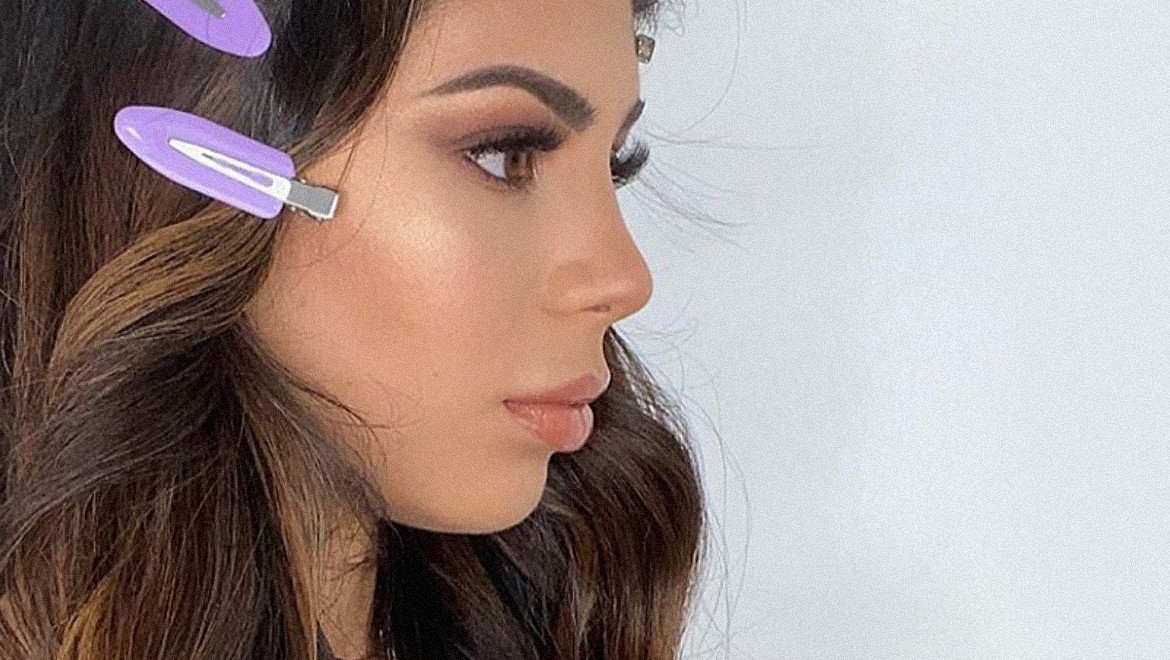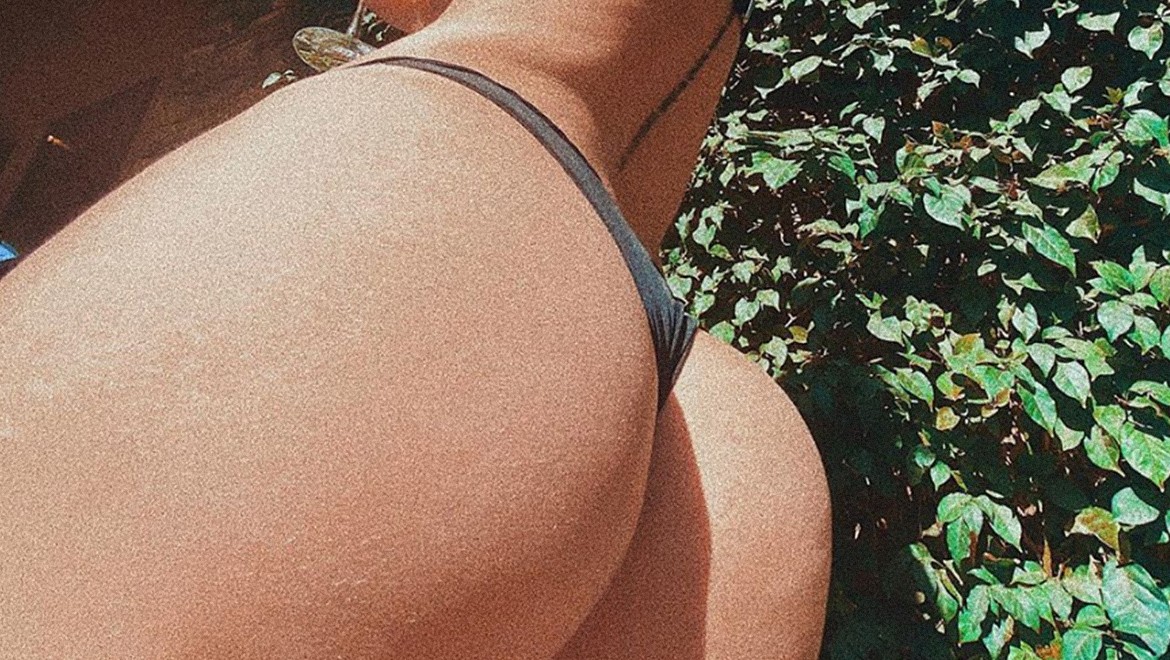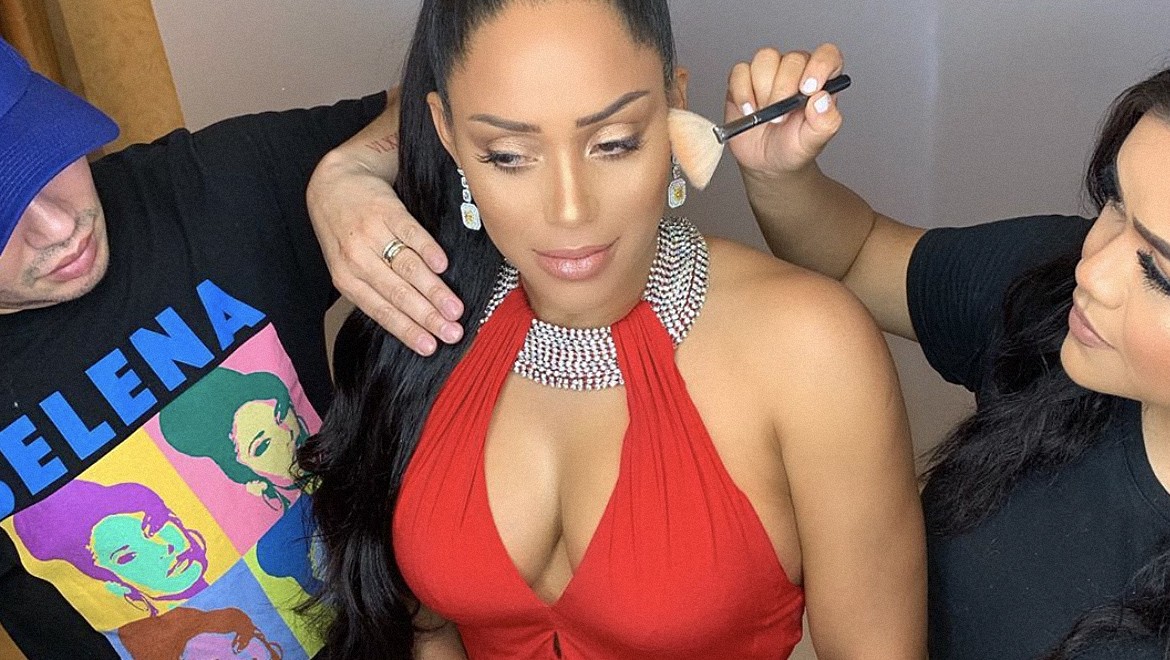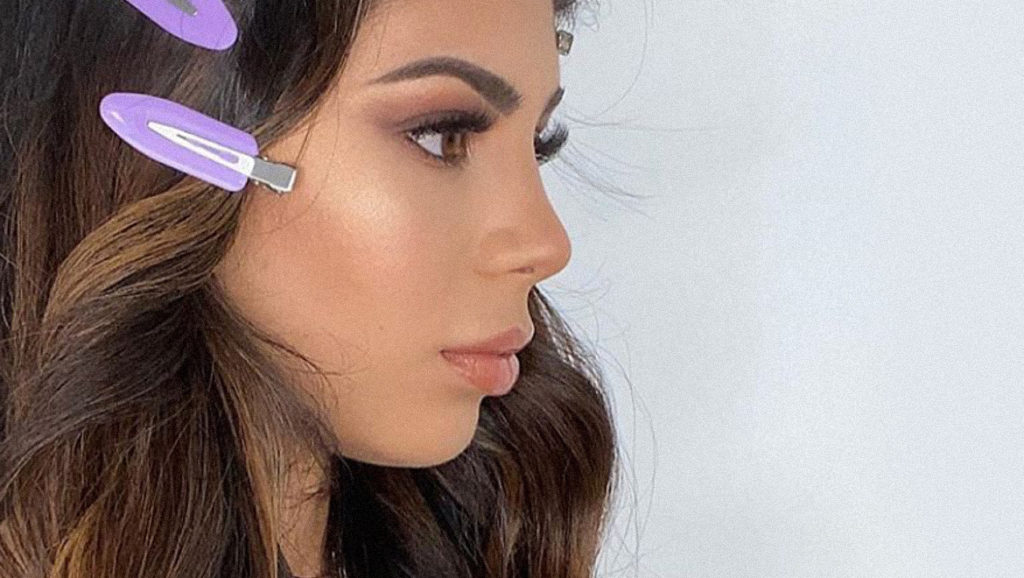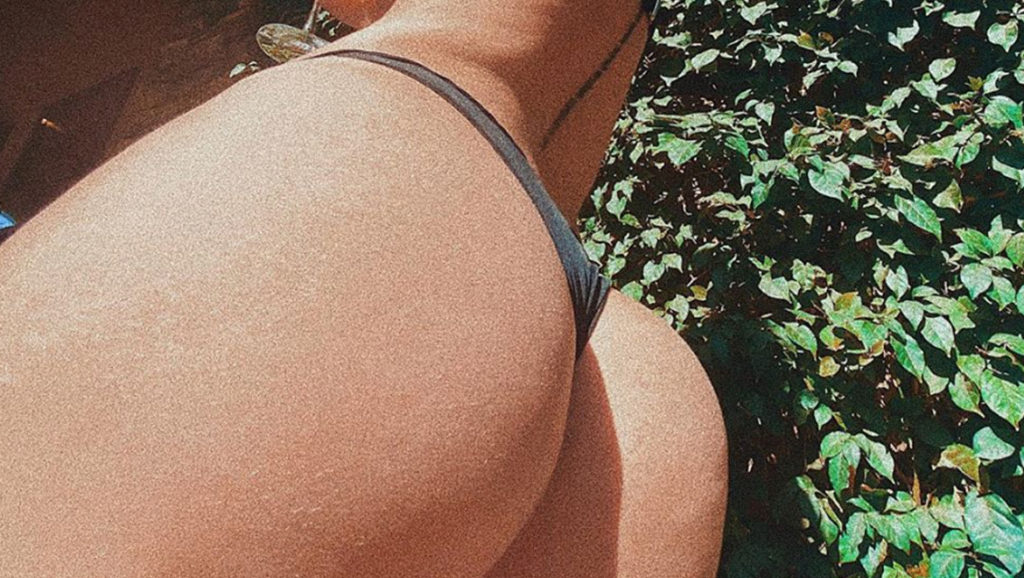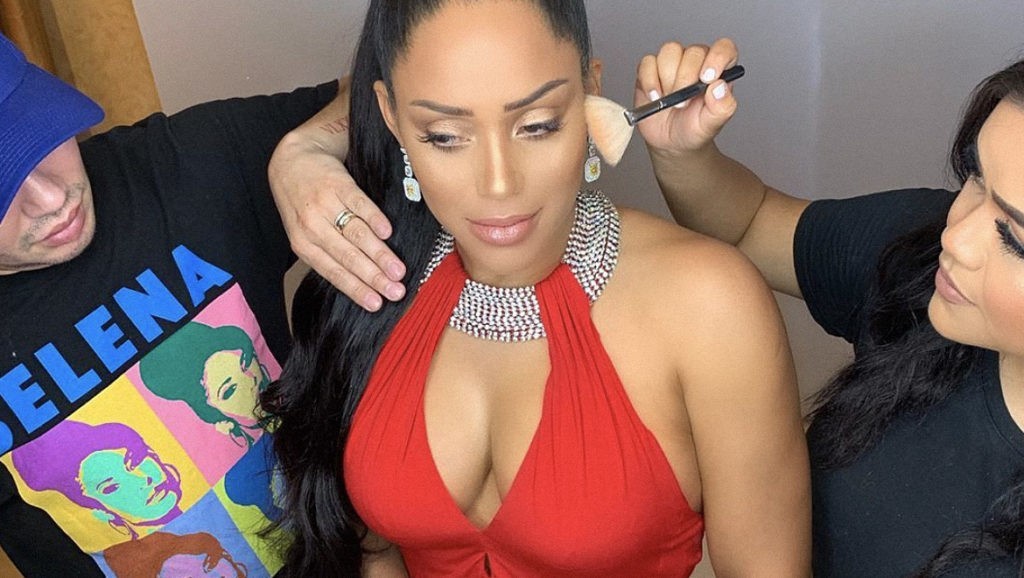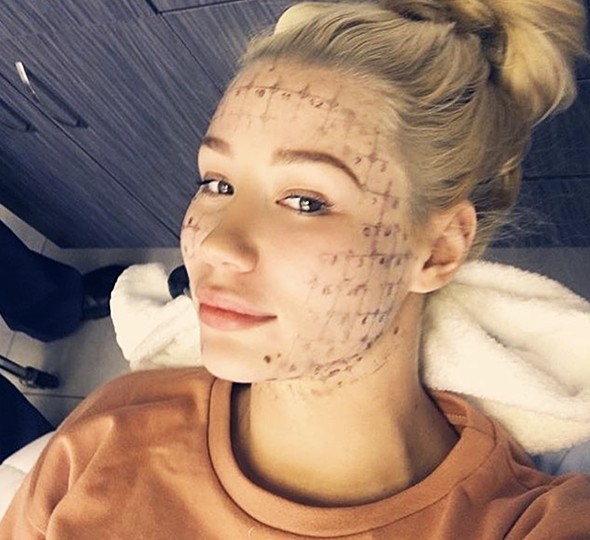Keep Them Guessing®
RHINOPLASTY SURGERY BEVERLY HILLS
Nasal Tip Sutures Part I: The Evolution
Ramin A. Behmand, M.D., Ashkan Ghavami, M.D., and Bahman Guyuron, M.D.
Suture techniques for reshaping the nasal tip have been in use for many decades. However, the past two decades have been the most influential in the advancement of the procedures commonly used today. This report details the origin of the major tip suture techniques and tracks their evolution through the years. The early techniques in tip rhinoplasty share a basic principle: the sacrifice of lateral crus integrity to augment the middle and medial crural cartilage to gain tip projection and height. These techniques often disrupt the support mechanisms of the tip lobule, leading to undesirable postoperative results, including supratip fullness, tip asymmetry, tip drop, and an overoperated appearance. Modern nasal tip surgery is founded on the philosophy that suture placement does not simply secure partially excised sections of alar cartilage; rather it aims to directly reshape and reposition the various nasal tip components. The principal suturing methods available in the repertoire of today’s rhinoplasty surgeon are the medial crural suture, the middle crura suture, the interdomal suture, the transdomal suture, the ateral crura suture, the medial crura anchor suture, the tip rotation suture, the medial crura footplate suture, and he lateral crura convexity control suture. This report acknowledges past contributions to nasal tip surgery and looks at the recent evolution of techniques commonly used today. (Plast. Reconstr. Surg. 112: 1125, 2003.)
EARLY HISTORY
The earliest techniques in rhinoplasty focused on reconstruction of nasal defects through augmentation of tissue and are traced back to Sanskrit teachings originating from Sushrutu in 500 B.C. India. Contributions to modern rhinoplasty were first reported in Europe in the 1800s by Germans, Carl von Graefe and Johann Dieffenbach. Carl von Graefe publisheda lengthy text in 1818, and Johann Dieffenbach published a 100-page surgical text, Die operative Chirurgie, in 1845, both focusing mainly on nasal reconstruction. Although these surgeons were greatly limited by the lack of anesthesia, crude instrumentation, and rudimentary sutures, their ideas were novel and innovative, emphasizing the significance of nasal reconstruction. Dieffenbach provided the first description of transferring nasal defect patterns onto the forehead before flap elevation and advocated aesthetic improvements
not always related to the reconstructive operation.
Later in the nineteenth century, the emphasis in rhinoplasty shifted toward reductive methods.6 John O. Roe was the first to describe the intranasal approach and also described both the first operation that focused on the nasal tip5,7–9 and the removal of the osseocartilaginous hump by way of an intranasal approach.3 Although rudimentary in nature, Roe’s work signaled a new era in aesthetically oriented rhinoplasty by avoiding external incisions and emphasizing reductive methods. Nevertheless, it was the Berlin surgeon, Jacques Joseph, whose work published in 1931 has led to the general consensus that acknowledges him as the father of modern rhinoplasty.
Among his impressive contributions, Joseph provided a description of what was to be the first suture in tip rhinoplasty, the orthopedic suture. This was a columellar-septal suture, not unlike today’s medial crura anchor suture, and served to rotate the nasal tip, providing increased projection while stabilizing the tip lobule complex. He used this suture for the correction of the “boxy undefined tip,” after transecting the lateral crural cartilages adjacent to the domes and excising a full-thickness triangular alar section. In addition, Joseph described what is now known as the interdomal suture to provide stabilization, tip rotation, and narrowing.
The early suturing techniques focused on securing repositioned alar cartilage remnants after they had undergone significant resection. Nevertheless, these tip modification techniques disrupted the supporting structures of the nasal tip and led to numerous postoperative deformities. While many of the techniques appeared effective in achieving tip projection and cephalic rotation, the final result was an overoperated look that would be unacceptable today to both patient and surgeon alike. Not surprisingly, methods of tip alteration would eventually focus more on preservation of the alar cartilage through the use of various sutures. Sutures would no longer be used to fix resected cartilages in their new positions; rather the sutures themselves would become the means of modifying the tip through precise placement and tension control.
In 1954, Irving B. Goldman described a more refined method for narrowing the nasal tip and increasing tip projection and cephalad rotation. Later, he stressed the importance of the medial crura in tip surgery and outlined the “Goldman Tip” procedure, which borrowed a segment of lateral crura to augment medial crural height through the creation of a single midline strut.13 In this procedure, through a closed approach, the lower lateral cartilages are delivered and completely transected lateral to the dome with a combination of marginal and intercartilaginous incisions. A medial crura suture is then placed in the area of the domes, adding length to the medial crura and anchoring them to the septum. Despite its popularity at the time, the long-term results of this procedure were poor and included visible tip asymmetries and alar rim collapse with nasal tip pinching.
In 1971, Janeke and Wright delineated the important supporting structures of the tip lobule complex that should be preserved during rhinoplasty.14 These included the ligamentous connections between the medial crura footplates and the posterior caudal septum, the dense fibrous tissue joining the lateral crura to the sesamoid cartilages, the fibrous attachments between the upper and lower lateral cartilages, and the portion of transverse fibrous tissue that binds the middle and medial crura together known as the interdomal ligament. While these supporting structures are not always preserved in today’s techniques, Janeke and Wright provided an understanding of the structural interactions among the various components of the nasal tip and stressed that the manipulation of one component would have an effect on the remainder of the tip complex. Once again, the use of sutures for controlling
and altering these tip structures was indirectly emphasized. While several authors presented isolated methods for nondestructive reshaping of the nasal tip during this time period, they also continued to advocate simultaneous destructive reshaping techniques.
MODERN ERA : TIP RESHAPING WITH SUTURES
The modern era of nasal tip reshaping developed as the emphasis shifted from the resection of malformed cartilages to the use of sutures for reshaping existing cartilages in the nasal tip. This period witnessed the eventual evolution of nine sutures to reshape the nasal tip. These sutures include the medial crura suture, the middle crura suture, the interdomal suture, the transdomal suture, the lateral crura suture, the medial crura anchor suture, the tip rotation suture, the medial crura footplate suture, and the lateral crura convexity control suture.
The common feature among all modern suture techniques is their reliance on precise placement and tension control. Many of the surgical methods of repositioning the alar cartilages with sutures have been previously used by surgeons in cleft nasal reconstruction. An example of this is the work of McIndoe and Rees, who in 1959 remodeled the cleft nasal tip by repositioning and fixing the alar cartilages and symmetrically realigning the cartilages while using multiple medial crura sutures, columellar- septal sutures, interdomal sutures, and fixation of the lateral crura with multiple silk mattress sutures placed through skin.15 In 1977, Tajima and Maruyama17 also used sutures to correct the cleft nostril deformity by placing medial crura suture, interdomal suture, and lateral crura sutures in the alar cartilages. The knowledge gained in cleft surgery would eventually be applied to aesthetic rhinoplasty of the nose.
When cartilage graft is used as the predominant mode of reshaping the nasal tip, many variables make controlling grafts more difficult. These variables include malposition, displacement, warping, resorption, visible irregularities, extrusion, infection, and soft-tissue deformation and atrophy. This is especially true with grafts placed subcutaneously, which tend to be more visible. Nonvisible grafts, such as a columellar strut, are not in direct contact with the overlying soft-tissue envelope and are influenced by these variables to a lesser degree on precise suture placement were established. In 1985, McCullough and English19 described the “double-dome unit” procedure to increase nasal tip projection and definition. Presented as an alternative to the Goldman tip procedure, the double-dome unit is created by the morselization of the medial and lateral sides of each dome and placement of a horizontal mattress suture through all four crura just beneath the domes. The knot is placed on the lateral component of the dome last entered. The result is a narrowing of the tip, increased lobular size, increased tip projection, and reduction in the interdomal distance. Nevertheless, the morselization used in this technique can be destructive as it results in a weakening of the alar rim, which often has unpleasant consequences. In addition, the technique does not allow for alteration of the domes individually. Tardy and Cheng21 ultimately modified this technique in 1987 by excising the interdomal soft tissue and scoring the domes. The knot was placed in a more symmetric position deep in the interdomal space. Although Tardy named the transdomal suture, the transdomal suture, as it is known today, is a separate suture placed through the two crura of each dome, which is described by Daniel as “domedefinition suture.”20 This approach allows for a convex domal segment plus a sharp domal segment- lateral crural drop-off, resulting in some degree of lateral crural concavity, the degree of which is determined by the suture tension. A further variation of the transdomal suture, “lateral crural steal,” was described in 1989 by Kridel et al. as increasing nasal tip projection and rotation while preserving the alar rim strip. After medial crura stabilization, a transdomal suture is placed through the lateral crus and brought out through the medial crus, just below the new domal units. By way of differential suture placement, this technique makes use of the “tripod concept” first described by Anderson in 1969. The end result is a tip that is positioned in a more anterior and superior location.
Perhaps the most detailed and influential nondestructive approach to nasal tip suturing and alar rim strip preservation was presented and later published by Tebbetts. An innovative advocate of modern tip-suturing techniques, he described a four-stage approach to tip surgery. In stage 1, the soft tissue is skeletonized through an open approach, and symmetrical lateral crural rim strips are created through scoring and/or conservative trimming of solely the cephalic lateral crural border. In stage 2, the medial crura are positioned, and the medial arch is unified with the use of medial crura sutures placed cephalically for stabilization, dome projection equalization, and to act as a fixed points of reference for subsequent force vectors. Medial crura footplate suture (“flare control sutures”) and additional medial crura sutures are placed to control caudal flaring, correct medial crural asymmetries, or stabilize an intercrural strut. In stage 3, if necessary, a columellar strut is placed, positioned, and shaped. lateral crural suture (“lateral crural spanning sutures”) for repositioning and changing the shape of lateral crural convexities, as seen in boxy or trapezoid TABLE I Evolution of Suture Placement in the Nasal Tip Surgeon(s) Year Technique Joseph 1931 “Orthopedic suture”: columella septal suture (interdomal and medial crura anchor sutures) Goldman 1954 Lateral crura divided just lateral to domes, medial crura sutured together (medial crural, middle crura, and interdomal sutures) McIndoe and Rees 1959 Cleft nose repair: alar cartilage repositioned with medial crural and lateral crural sutures (medial crura anchor and medial crural sutures) McCollough and English 1985 “Double-dome unit”: moreslization of domes; horizontal mattress through both medial and lateral crura under domes (early transdomal and interdomal sutures) Tardy 1987 “Transdomal suture”: horizontal mattress through both domes with knot placed interdomal Daniel 1987 “Domal creation sutures” (current transdomal suture), an individual horizontal mattress suture placed across each dome Tebbetts 1989 1994 “Systematic nondestructive approach”: specific sequence of suture placement; medial crura anchor suture, medial crura footplate suture, medial crura suture, lateral crura suture, tip rotation sutures. Gruber 1997 Lateral crura convexity control suture Guyuron 1998 Medial crura footplate suture refinement Vol. 112, No. 4 / NASAL TIP SUTURES PART I 1127 tips, may be used. The lateral crura suture may be placed unilaterally or bilaterally and at varying positions to correct asymmetries, alar and internal valve collapse, and overrotation of the tip. Further domal definition and projection are provided with transdomal sutures. Stage 4 involves the positioning of the “unified, symmetrical tip complex” for final projection and rotation using a medial crura anchor suture, which he terms “projection control sutures,” to advance the tip complex anteriorly or posteriorly. Tebbetts also introduced the tip rotation suture, which passes from the cephalad edge of the medial crura to the dorsal septum near the septal angle to produce and maintain tip rotation. Guyuron refined the medial crura footplate suture in 1998 and described removing the intervening soft tissue between the medial crura and the footplates and use of the “Ustitch” for medial crura footplate approximation. These refinements and precise, vectorbased suturing techniques further illustrate the versatility and effectiveness of combining the tip-suturing methods available. Gruber, in 1997, added yet another suture technique to control the convexity of the lateral crura in his review and support of the existing tip sutures. In this technique, a mattress suture is placed through each crus separately, and the convexity of the crus is altered based on suture tension.
DISCUSSION
Rhinoplasty in the nineteenth century consisted primarily of the addition of soft tissue and augmentation, generally for reconstructive purposes. By the third decade of the twentieth century, greater emphasis was being placed on surgery of the nose for aesthetic reasons. The hallmark of this period was the publication of a significant body of work on aesthetic rhinoplasty by the innovative German surgeon, Jacques Joseph. The period ranging from about 1930 to the early 1980s was marked by two parallel developments. On the one hand, the increased use of cartilage excision techniques in aesthetic rhinoplasty often resulted in the disruption of the nasal tip components with inconsistent outcomes. Thus, sutures served to hold the disrupted and then repositioned tip components in place. On the other hand, a concurrent evolution was taking place in the field of cleft nose surgery. These innovations primarily centered on the use of sutures to reshape the nasal tip cartilages in the cleft nose and yielded numerous techniques for altering the nasal tip cartilages without significant reliance on excision or disruption of the cartilages. By the early 1980s, various suturing methods used in cleft surgery, and even some cartilage-reshaping techniques used in otoplasty, were gaining rapid acceptance in aesthetic nasal surgery. The ensuing two decades leading to the twenty-first century were marked by a rapid transition from disruptive cartilage-altering techniques to techniques that made use of precision suture placement for the purpose of reshaping the nasal tip cartilages, without serious disruption of the components.
In this innovative field where surgical techniques develop rapidly, it is not surprising that many have developed in tandem but with varying nomenclature. Names of some techniques are descriptive, while others may only bear a specific meaning to the founding surgeon. Invariably, that creates confusion for the novice and the experienced surgeon alike. Nevertheless, despite the inconsistencies in nomenclature, most techniques are well described and illustrated. It is of great importance to extend credit to the pioneers of tip rhinoplasty techniques, and yet, concurrently, these techniques must be presented with consistency of description, illustration, and nomenclature to be a beneficial resource to all plastic surgeons performingrhinoplasty. Surgical results are more predictable with increased reliance on sutures placed with precision and an understanding of the dynamic that they induce when used singly or in combination. Today, rather than excising and repositioning the tip cartilages, the focus is on lateral crus preservation and tip cartilage modification through precise suture placement and tension control. Having presented the history of nasal tip sutures here, our next report describes and illustrates the most significant, commonly used suture techniques in nasal tip surgery, along with a detailed discussion of their nuances.
Ramin A. Behmand, M.D.
1776 Ygnacio Valley Road, Suite 108
Walnut Creek, Calif. 94598
rbehmand@behmand.com
REFERENCES
1. Dieffenbach, J. F. Die operative Chirurgie. Leipzig: Brockhaus,
1845. P. 331.
2. Von Graefe, C. F. Rhinoplastik; oder, Die Kunst der Verlust der Nase organisch zu ersetzen, in ihren fruheren Verhaltnissen erforscht, und durch neue Verfahrungsweisen zur
1128 PLASTIC AND RECONSTRUCTIVE SURGERY, September 15, 2003
hoheren Vollkommenheit gefordert. Berlin: Realschulbuchhandlung,
1818.
3. Rogers, B. O. Early historical development of corrective rhinoplasty. In R. D. Millard (Ed.), Symposium on Corrective Rhinoplasty. St. Louis: Mosby, 1976.
4. Eisenberg, I. A history of rhinoplasty. S. Afr. Med. J. 62:
286, 1982.
5. Rogers, B. O. History of the development of aesthetic
surgery. In P. Regnault and R. K. Daniel (Eds.), Aesthetic Plastic Surgery. Boston: Little, Brown, 1984. Pp. 3–8.
6. Byrd, S. H. Rhinoplasty. S.R.P.S. 8: 3, 1993.
7. Roe, J. O. The deformity of the pug nose and its correction
by a simple operation. Med. Rec. 31: 621, 1887.
8. Roe, J. O. The correction of angular deformities of the nose by a subcutaneous approach. Med. Rec. 40: 57, 1891.
9. Cottle, M. H. John Orlando Roes: Pioneer in modern rhinoplasty. Arch. Otolaryngol. 80: 22, 1964.
10. Joseph, J. Nasenplastick und sonstige Gesichtsplastik nebst
einen Anhang ueber Mammaplastik. Leipzig: Verlag von
Curt Kabitzsch, 1931.
11. Daniel, R. K. Rhinoplasty: A simplified, three-stitch, open tip suture technique. Part I: Primary rhinoplasty. Plast. Reconstr. Surg. 103: 1491, 1999.
12. Goldman, I. B. Surgical tips on the nasal tip. Eye Ear Nose Throat Mon. 33: 583, 1954.
13. Goldman, I. B. The importance of the mesial crura in nasal-tip reconstruction. Arch. Otolaryngol. 65: 143, 1957.
14. Janeke, J. B., and Wright, W. K. Studies on the support of the nasal tip. Arch. Otolaryngol. 93: 458, 1971.
15. McIndoe, A., and Rees, T. D. Synchronous repair of secondary deformities in cleft lip and nose. Plast. Reconstr. Surg. 24: 150, 1959.
16. Spira, M., Hardy, S. B., and Gerow, F. J. Correction of nasal deformities accompanying unilateral cleft lip. Cleft Palate J. 7: 112, 1970.
17. Tajima, S., and Maruyama, M. Reverse-U incision for
secondary repair of cleft lip nose. Ann. Plast. Surg. 60:
256, 1977.
18. Tebbetts, J. B. Shaping and positioning the nasal tip without structural disruption: A new, systematic approach. Plast. Reconstr. Surg. 94: 61, 1994.
19. McCullough, E. G., and English, J. L. A new twist in nasal tip surgery: An alternative to the Goldman tip for the wide or bulbous lobule. Arch. Otolaryngol. 111: 524,
1985.
20. Daniel, R. K. Rhinoplasty: Creating an aesthetic tip. A preliminary report. Plast. Reconstr. Surg. 80: 775, 1987.
21. Tardy, M. E., Jr., and Cheng, E. Transdomal suture
refinement of the nasal tip. Facial Plast. Surg. 4: 317,
1987.
22. Kridel, R. W. H., Konior, R. J., Shumrick, K. A., and Wright, W. K. Advances in nasal tip surgery: The lateral crural steal. Arch. Otolaryngol. 115: 1206, 1989.
23. Anderson, J. R. The dynamics of rhinoplasty. In Proceedings of the Ninth International Congress of Otorhinolaryngology, International Congress Series. No. 206. Princeton,
N.J.: Excerpta Medica, 1969.
24. Tebbetts, J. B. Controlled non-destructive tip rhinoplasty:
A new approach for shaping and positioning nasal
tip elements. Presented at the 58th Annual Meeting of
the American Society for Aesthetic Plastic Surgery,
San Francisco, October 1989.
25. Tebbetts, J. B. Secondary tip modification: Shaping and positioning the nasal tip using nondestructive techniques.
In J. B. Tebbetts (Ed.), Primary Rhinoplasty: A
New Approach to the Logic and the Techniques. St. Louis:
Mosby, 1998.
26. Guyuron, B. Footplates of the medial crura. Plast. Reconstr. Surg. 101: 1359, 1998.
27. Gruber, R. P. Open rhinoplasty. Clin. Plast. Surg. 15: 95,
1988.
28. Gruber, R. P., and Peck, G. C. Rhinoplasty: State of the Art. St. Louis: Mosby, 1993. Pp. 61–74.
29. Gruber, R. P. Suture correction of nasal tip cartilage
concavities. Plast. Reconstr. Surg. 100: 1616, 1997.



